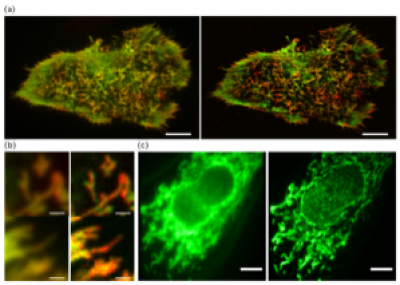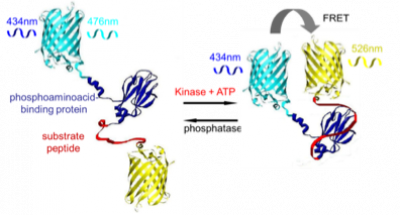Multicolor and 3D superresolution
Multicolor imaging provides a powerful method for dissecting molecular relations and for tracking dynamic interplays (a-b). Fully 3D imaging remains a challenge in superresolution imaging. The robustness of pcSOFI and the inherent capacity of fluctuation imaging to deal with reduced signal-to-noise ratio allow us to achieve superresolution 3D imaging.



